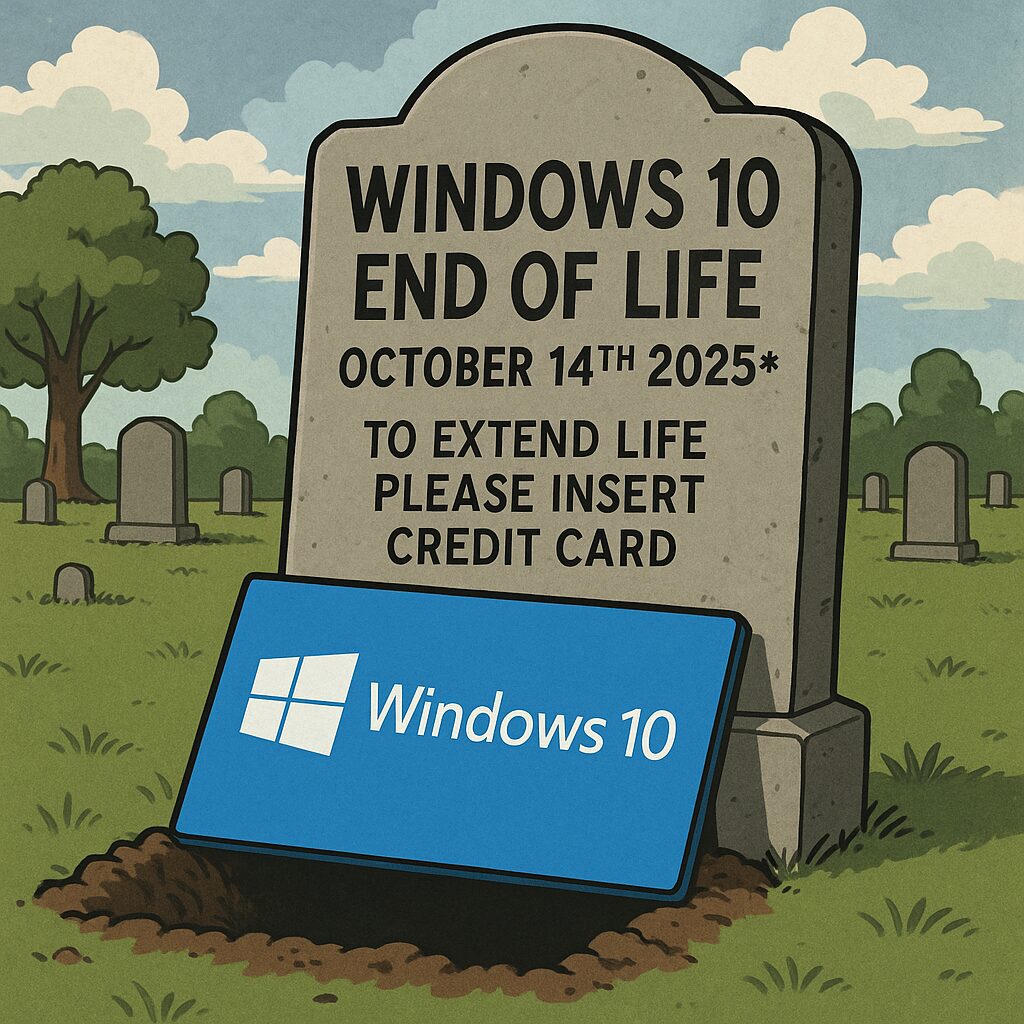Preparing for Windows 10’s End‑of‑Life: options for staying secure

Microsoft will end mainstream support for Windows 10 on October 14, 2025, meaning the last free security patches will be released on that month’s “Patch Tuesday” (the second Tuesday of the month). After that, regular updates will no longer arrive through Windows Update, and unpatched systems will become increasingly vulnerable. For people and organizations that can’t upgrade to Windows 11 immediately, Microsoft offers several ways to continue receiving critical security updates — but the options and costs depend on whether you are a home user or a business.
Options for home users
Microsoft’s consumer Extended Security Updates (ESU) program lets home users keep getting security patches for Windows 10 for one year after support ends (through October 13 2026). The program is tied to your Microsoft account and covers up to 10 devices. There are three ways to enroll:
- Free if you enable Windows Backup – If you back up your device’s settings using Microsoft’s Windows Backup/OneDrive service, you can enroll at no additional cost. During enrollment you choose to “Back up your PC settings,” and Windows will start syncing your preferences to the cloud.
- Redeem 1,000 Microsoft Rewards points – Microsoft Rewards (sometimes called “Bing points” because they are earned by using Bing and completing quizzes) can be used to pay for ESU. The Windows Central how‑to guide notes that you can enroll by redeeming 1,000 points if you have accumulated them.
- Pay US$30 once – You can buy a one‑year ESU license for $30 USD (plus tax), which covers up to 10 devices. The license is associated with your Microsoft account, and you can reuse it across your PCs.
In the European Economic Area (EEA), consumer advocates challenged Microsoft’s initial requirement to sync settings or pay. Microsoft responded by making ESU enrollment free for one year in the EEA. Windows Central reports that EEA users will still need to authenticate with a Microsoft account every 60 days, but no cloud backup, reward points or payment is required. Outside the EEA, you must still back up, redeem points or pay.
How to enroll a home PC
- Ensure prerequisites: your PC must be running Windows 10 version 22H2, have all current updates installed, and use an administrator account. If you log in with a local account, you will be prompted to sign in with or create a Microsoft account.
- Open Windows Update: go to Settings → Update & Security → Windows Update.
- Check for updates to ensure the ESU option appears.
- Click “Enroll now” under the end‑of‑support notice and choose one of the three options — Back up your settings, Redeem Microsoft Rewards points, or One‑time purchase. Follow the prompts to complete payment or rewards redemption.
- Once enrolled, repeat the process on additional devices using Add device, and those PCs will be covered by the same license.
Considering Windows 11 and TPM 2.0 bypasses
Modern PCs that meet Windows 11’s hardware requirements (TPM 2.0, Secure Boot, supported CPU and memory) will continue to receive updates until at least 2027–2029, depending on version. Bypassing these requirements is technically possible. Tom’s Hardware demonstrates how to create a bootable USB and edit the registry to disable TPM/CPU checks. However, bypassing Microsoft’s requirements voids support and may stop working if future updates enforce hardware checks. For businesses, the safer option is to install Windows 11 on supported hardware rather than rely on unsupported installations. Unsupported PCs can also be repurposed with Linux distributions such as Linux Mint to remain secure.
Understanding Patch Tuesday and the timeline
Microsoft releases cumulative security patches on Patch Tuesday, which occurs on the second Tuesday of each month. That means:
| Month in 2025 | Second Tuesday (Patch Tuesday) | Notes |
|---|---|---|
| October 2025 | Oct 14, 2025 | The last free Windows 10 security update will be delivered on this day. |
| November 2025 | Nov 11, 2025 | After this date, un-enrolled Windows 10 PCs will not receive security patches; only devices enrolled in ESU will get updates. |
| Monthly thereafter | 2nd Tuesday of each month | ESU‑enrolled PCs will continue to receive critical updates until Oct 13 2026 (consumers) or up to Oct 2028 (organizations, depending on subscription year). |
After October 14 2025, the Microsoft Defender antivirus definitions will continue independently until 2028, but OS vulnerabilities will not be patched unless you enroll in ESU or use a third‑party service.
Darkhorse IT’s patch management service
Keeping systems up to date involves more than just Windows updates. Darkhorse IT offers a comprehensive patch management service for both business and residential clients. Our service:
- Monitors and applies Microsoft Patch Tuesday updates promptly each month, including ESU updates for Windows 10 where applicable.
- Tracks and deploys security patches for third‑party software, such as browsers, Java, Adobe products and common productivity tools.
- Provides reporting and compliance tracking so businesses can demonstrate that their systems are patched to meet regulatory standards.
- Offers remote support and scheduling to minimize disruption.
By enrolling in our patch management service, you can offload the complexity of tracking update schedules and ensure that all your systems — Windows 10, Windows 11 or otherwise — stay secure.
Recommendations
- Business users should budget for ESU or migrate to Windows 11. The cost of ESU for organizations escalates each year, and unsupported hardware bypasses are risky.
- Home users outside the EEA who wish to keep Windows 10 should enroll in ESU via backup, rewards or payment. Signing up early ensures your PC continues receiving monthly patches through October 2026.
- Home users in the EEA can enroll for free but must still authenticate with a Microsoft account periodically.
- Consider upgrading hardware that cannot run Windows 11, or switch to a secure Linux distribution if the PC is not needed for Windows‑only applications.
- Stay vigilant on Patch Tuesday (second Tuesday each month) and apply updates promptly to minimize exposure.
By planning now and understanding your options, you can keep your systems secure even after Windows 10 reaches end‑of‑life.
Contact us at darkhorseit.com
Liked this post? Follow this blog to get more.
 DarkHorse IT
DarkHorse IT